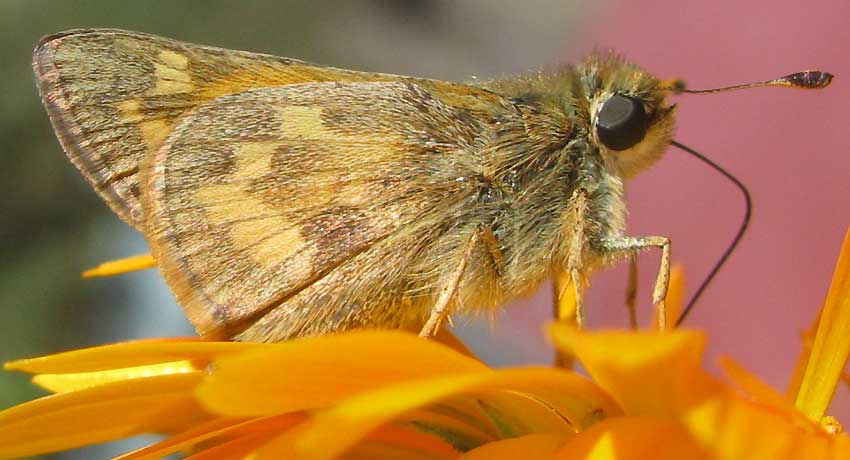Excerpts from Jim Conrad's
Naturalist Newsletter

from the February 24, 2013 Newsletter issued from the valley of the Dry Frio River in northern Uvalde County, southwestern Texas, on the southern border of the Edwards Plateau; elevation ~1750m (~5750 ft); N29.62°, W99.86°; USA
SACHEM
The other day I placed the potted Calendulas outside and within a few minutes a skipper butterfly had landed on a flower, as shown above. Volunteer butterfly identifier Bea in Ontario confirms that it's the Sachem, ATALOPEDES CAMPESTRIS, which we've met many times. The Sachem is a good species with which to start off the new season of adding species to our Selected Butterflies of Uvalde County Page, which already has a handsome selection of photos from last year, as shown at http://www.backyardnature.net/n/a/uvalde/.
Sachems are found throughout the US southern states from coast to coast, and in late summer it migrates into the northern states. It also extends southward through Mexico and Central America to Brazil in South America. Over most of its range it's one of the most common, conspicuous and attention-getting of all skippers.
Besides being so common, one way Sachems draw our attention is that they are so big-headed and thick-bodied that we're surprised to see that with such small wings they can fly so robustly. Those robust flights are another reason to notice them, because during most of the day males perch on or near the ground, often in conspicuous spots, waiting for females to fly by. When a female does zip past, a swirling mid-air commotion takes place as they figure out if they're meant for one another.
One reason Sachems are so common is that their caterpillars feed on grasses, including grass species benefiting from human disruption of the landscape, such as crabgrass, Bermuda grass, St. Augustine and Goosegrass. Adults also take nectar from many kinds of common flowers, from milkweeds and peppermint to clover and marigolds. As might be expected of such a dynamic, aggressive species, it appears to be expanding its distribution northward, maybe as a response to global warming.
The name Sachem is based on similar-sounding terms used to signify chiefs or leading people in tribes of several northeastern American indigenous people.